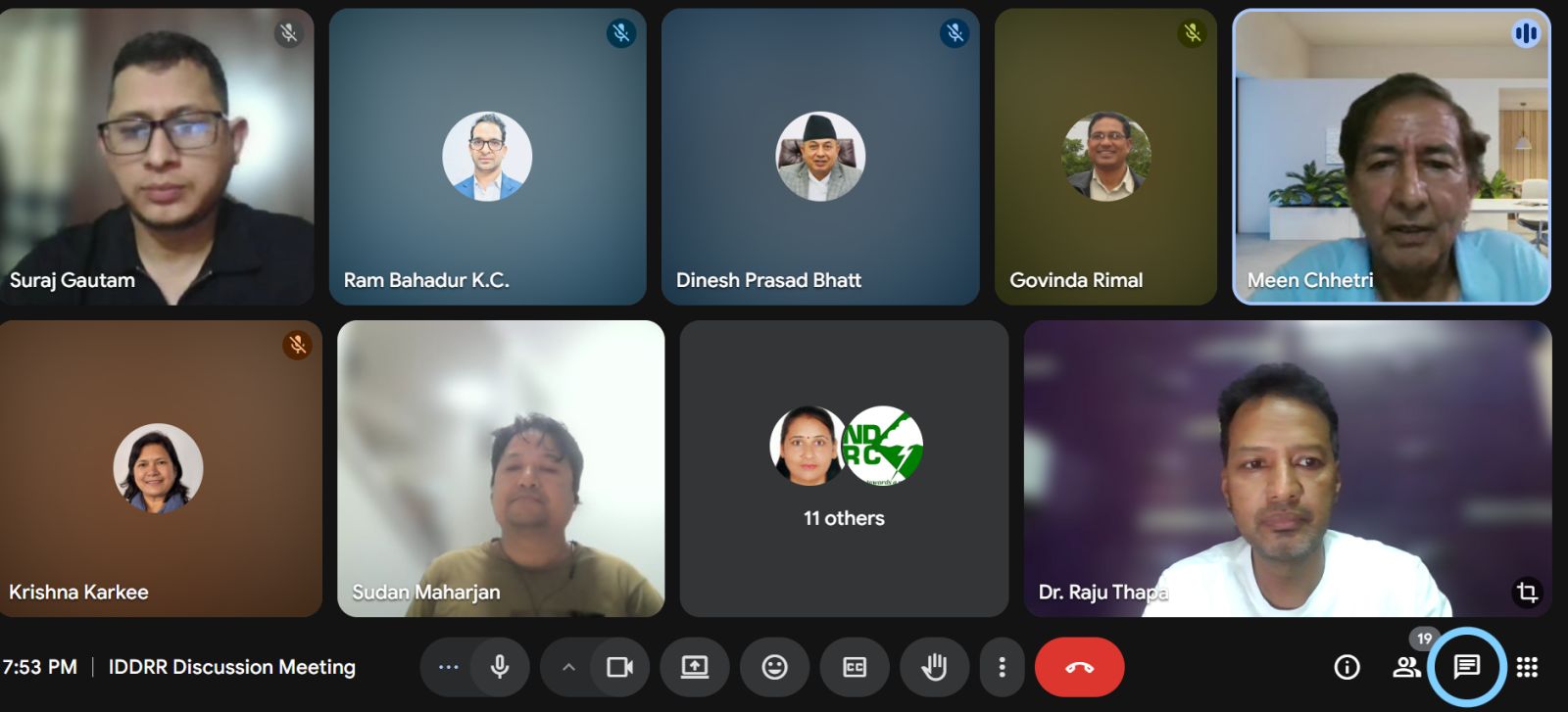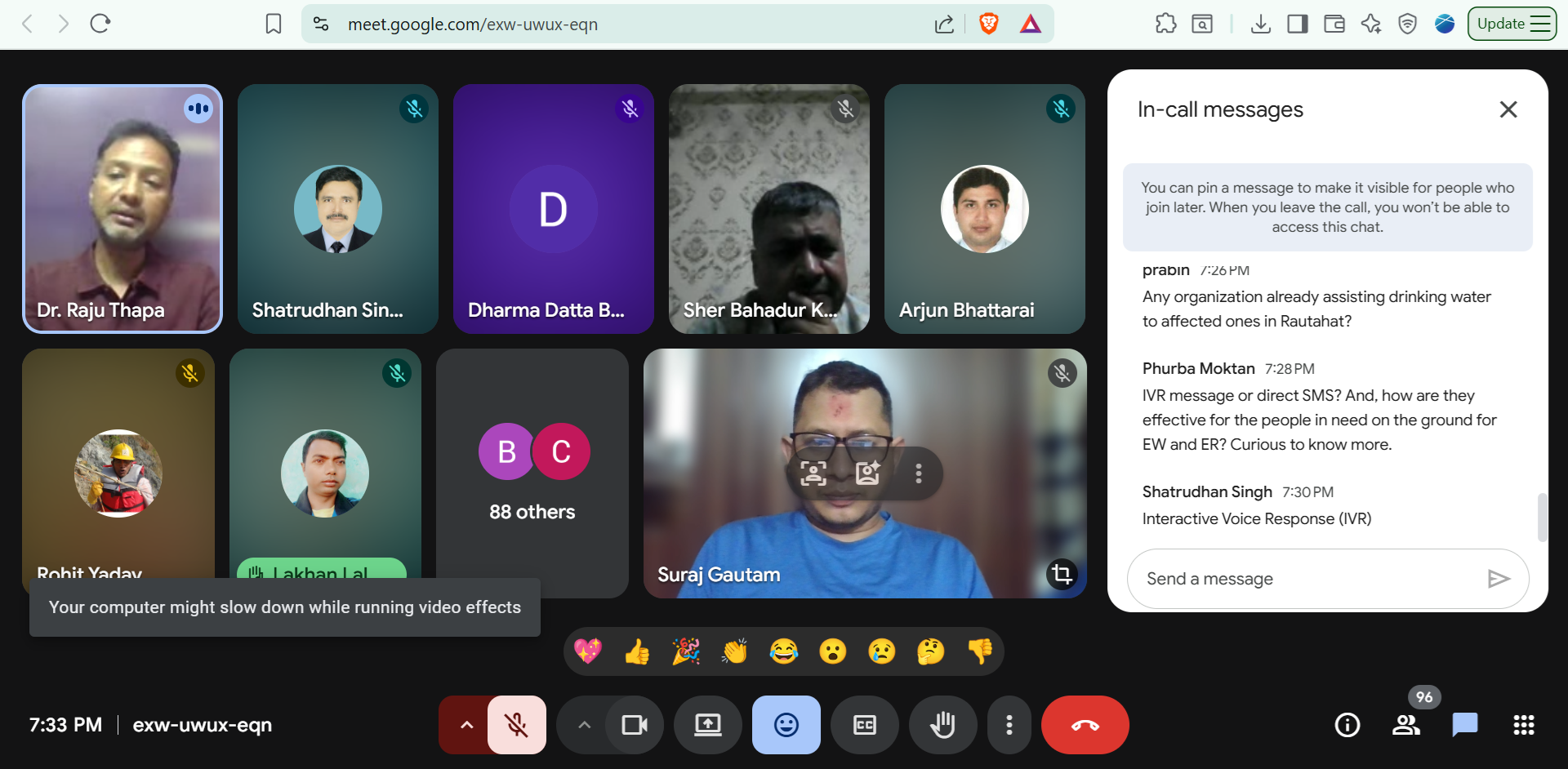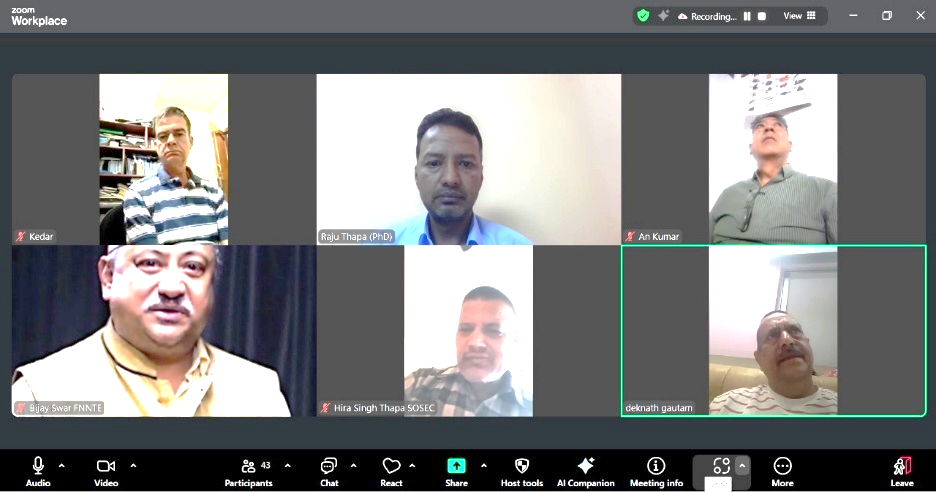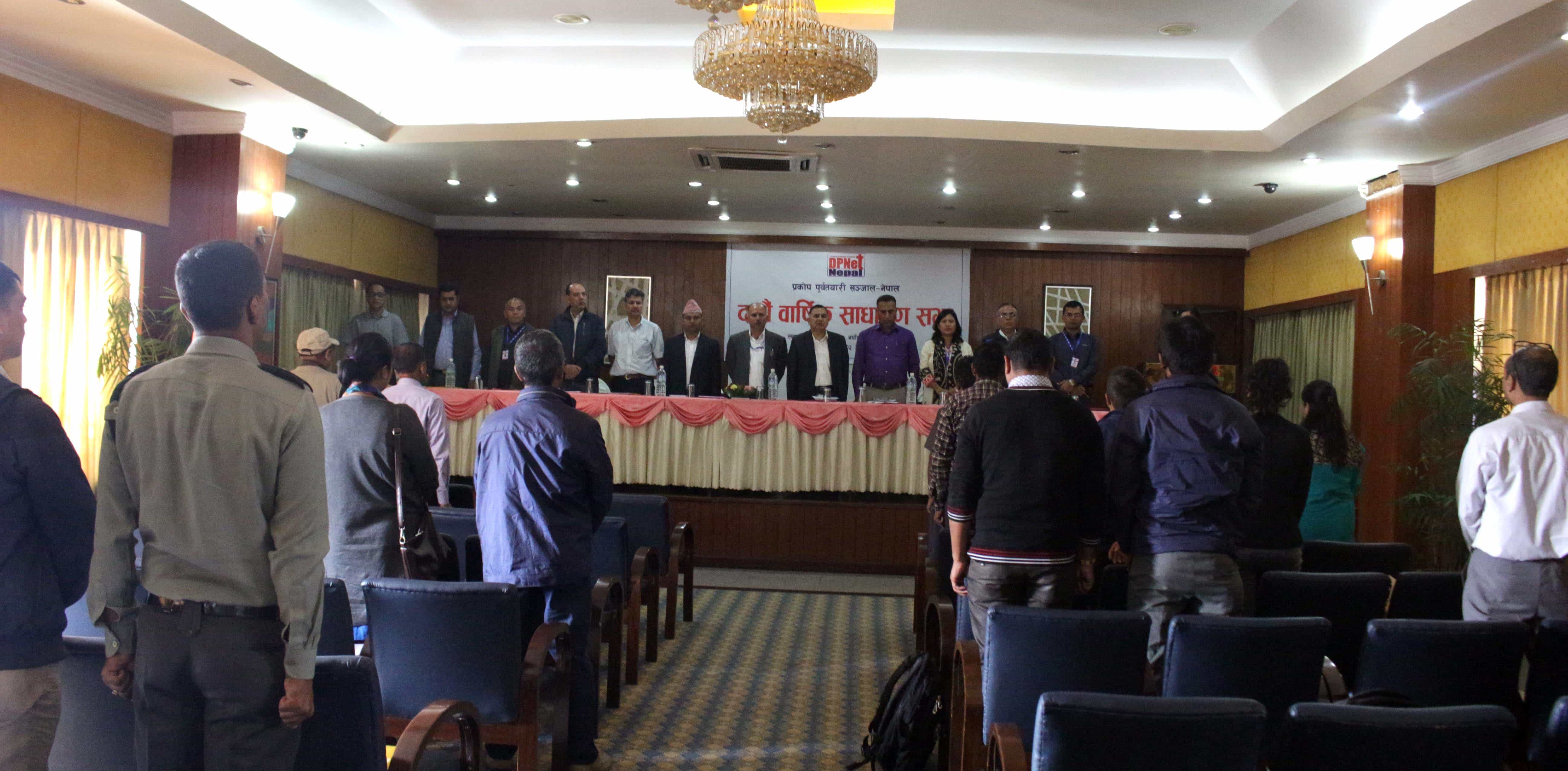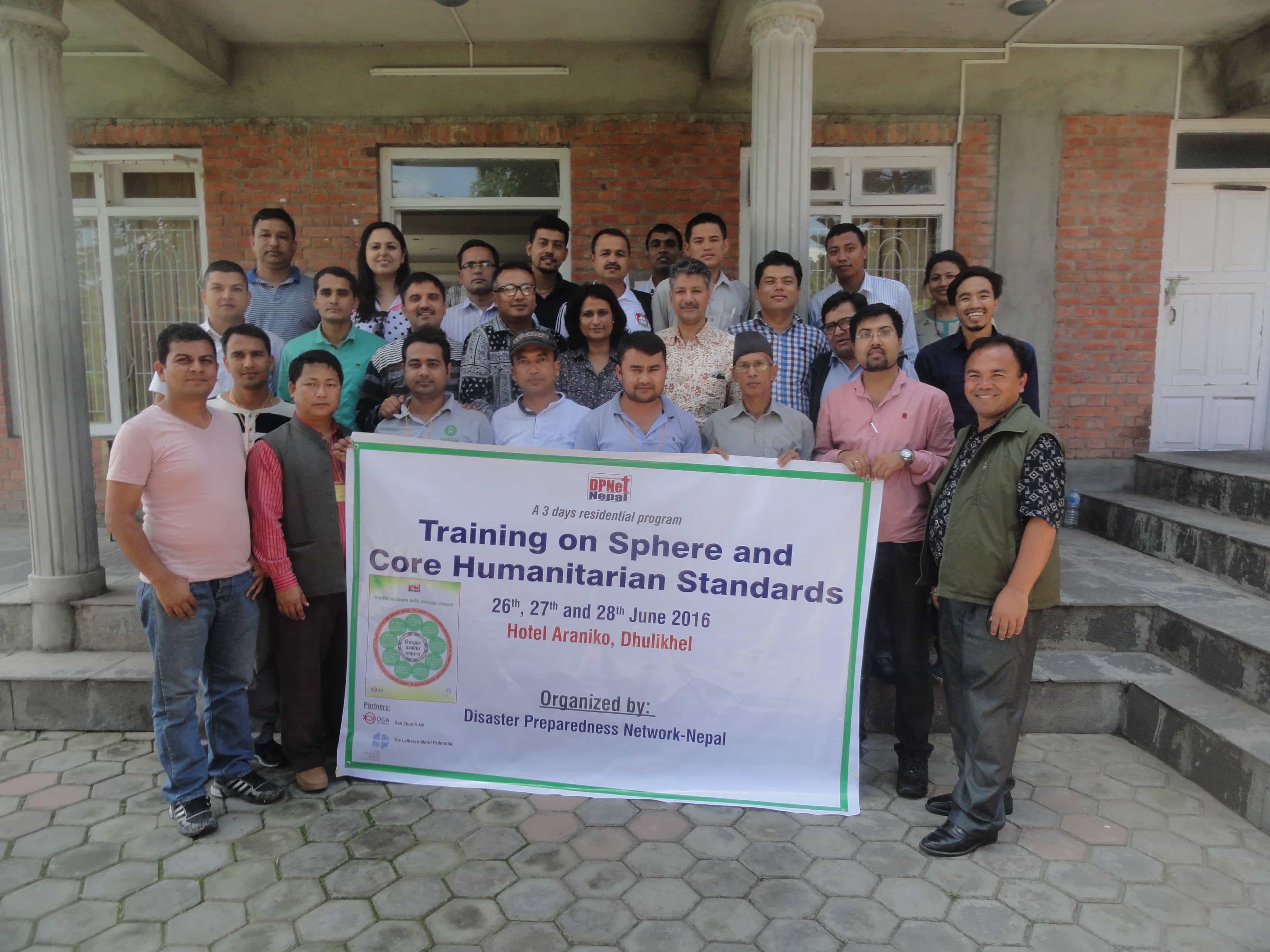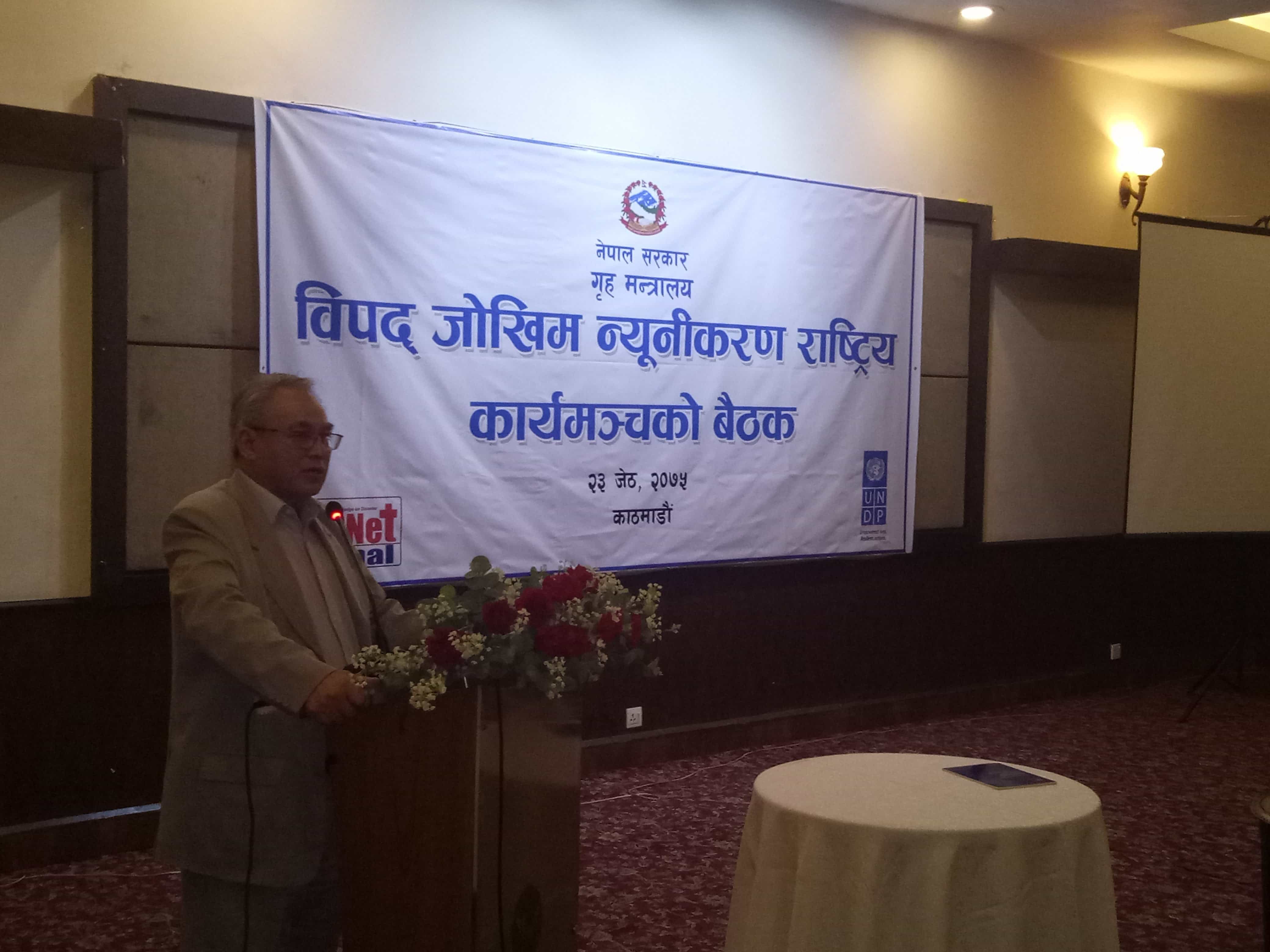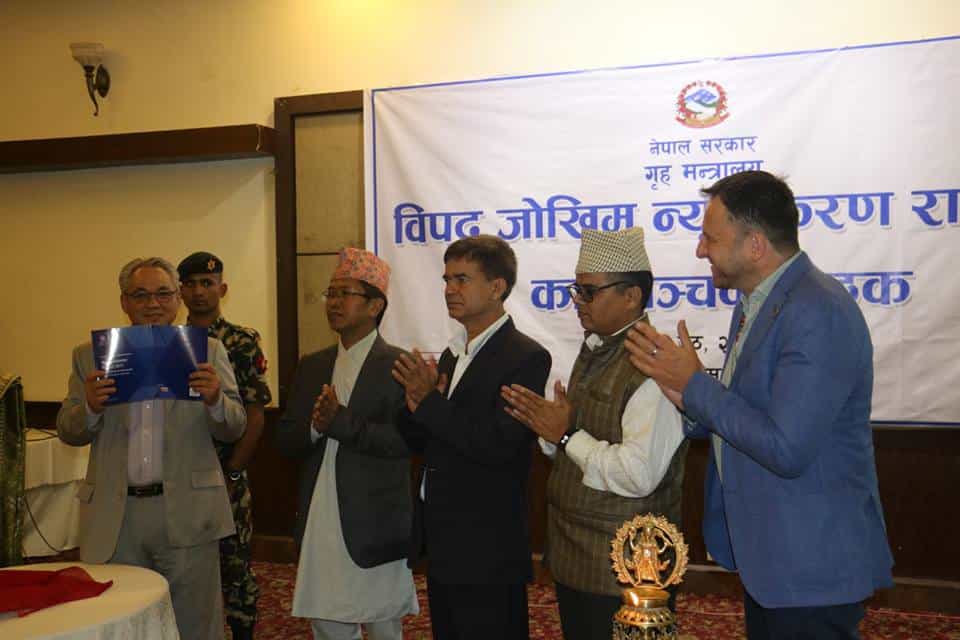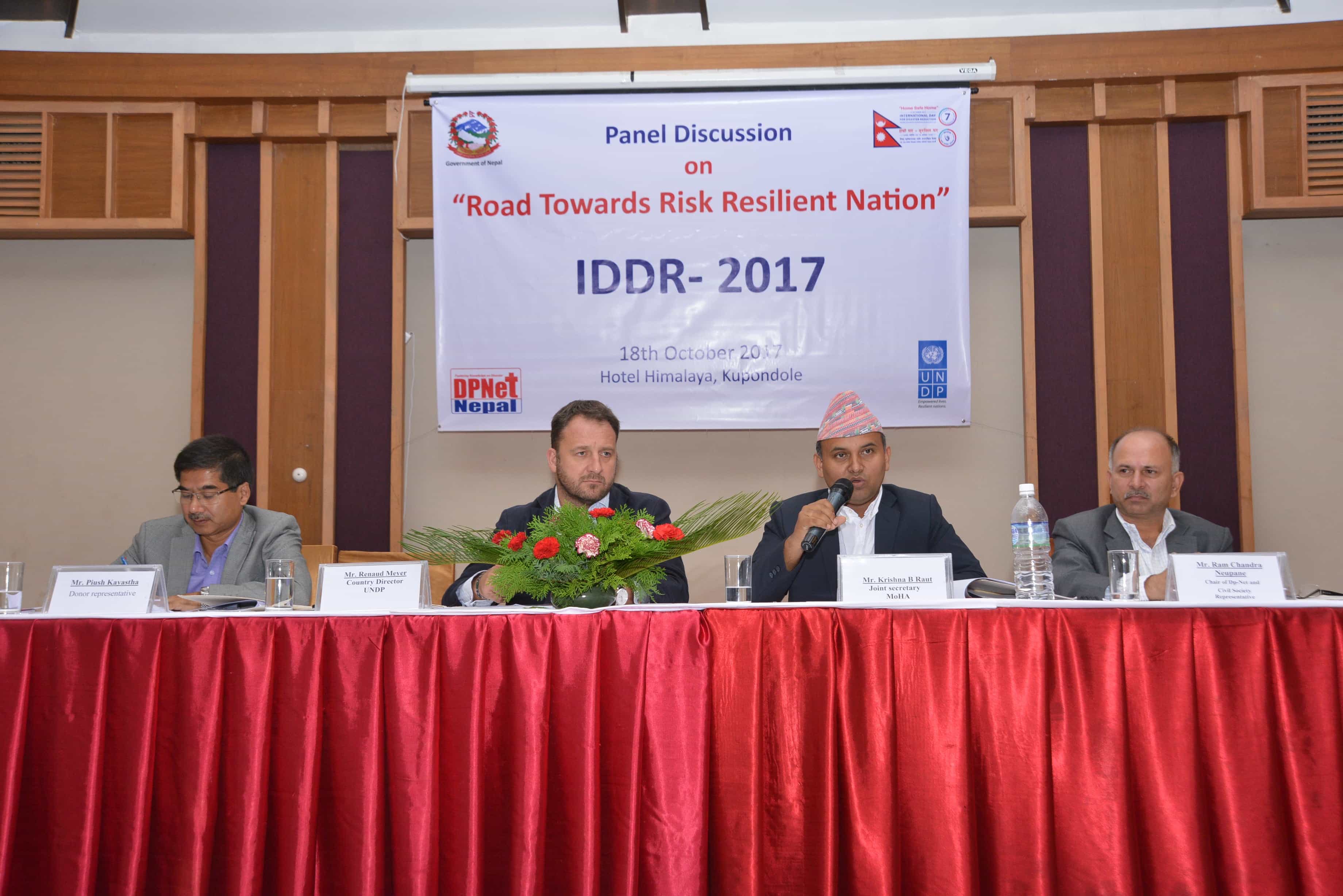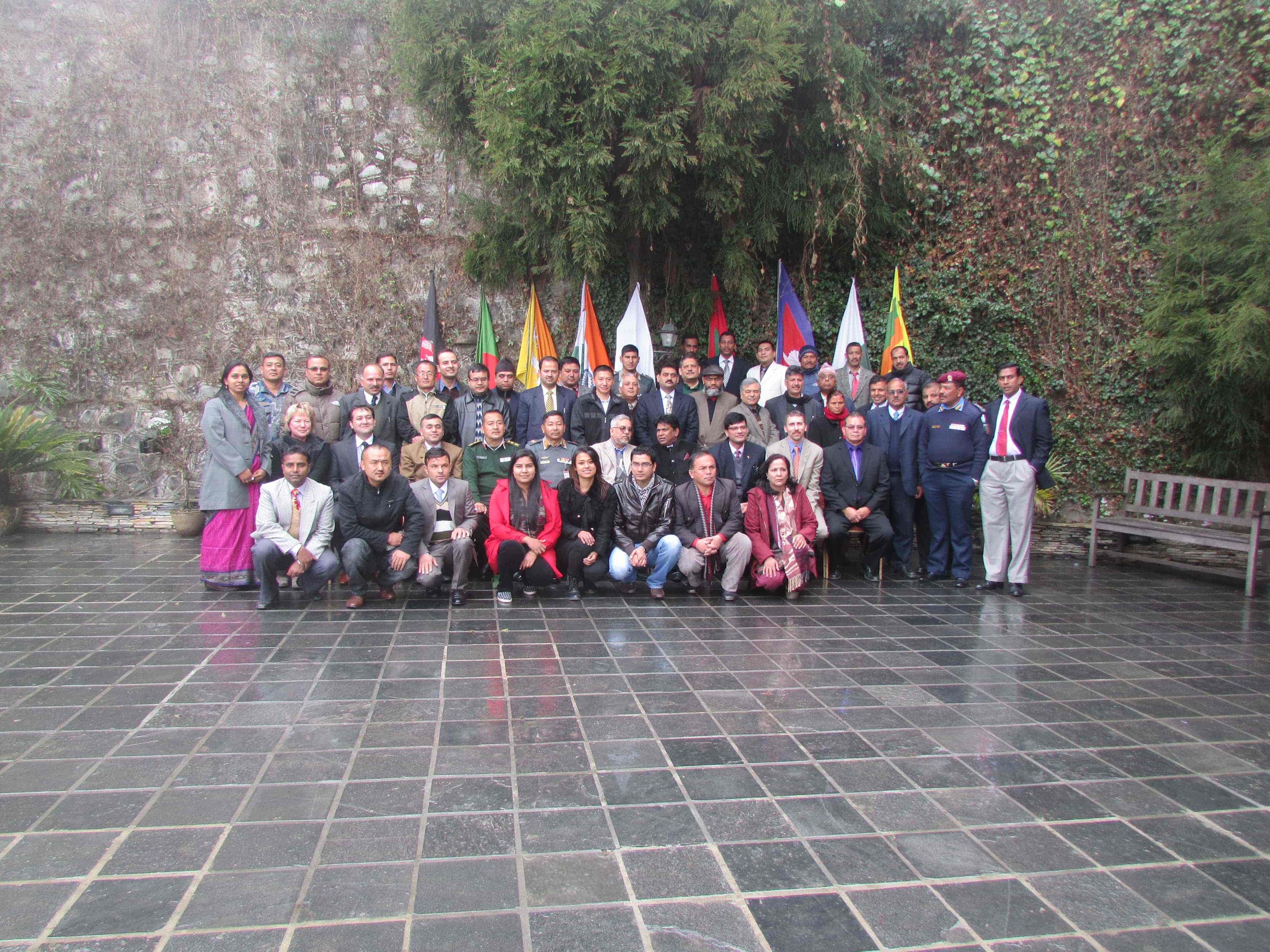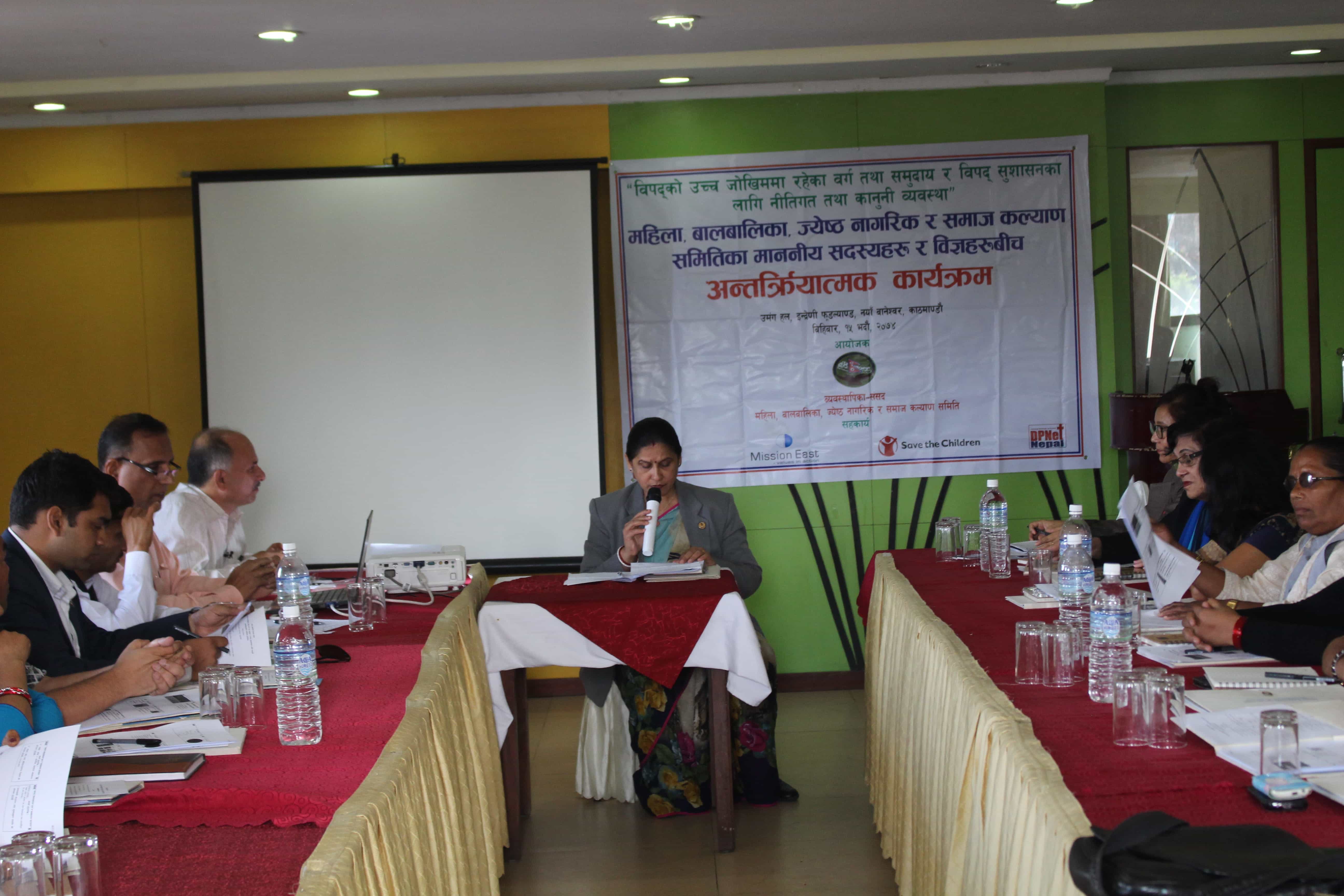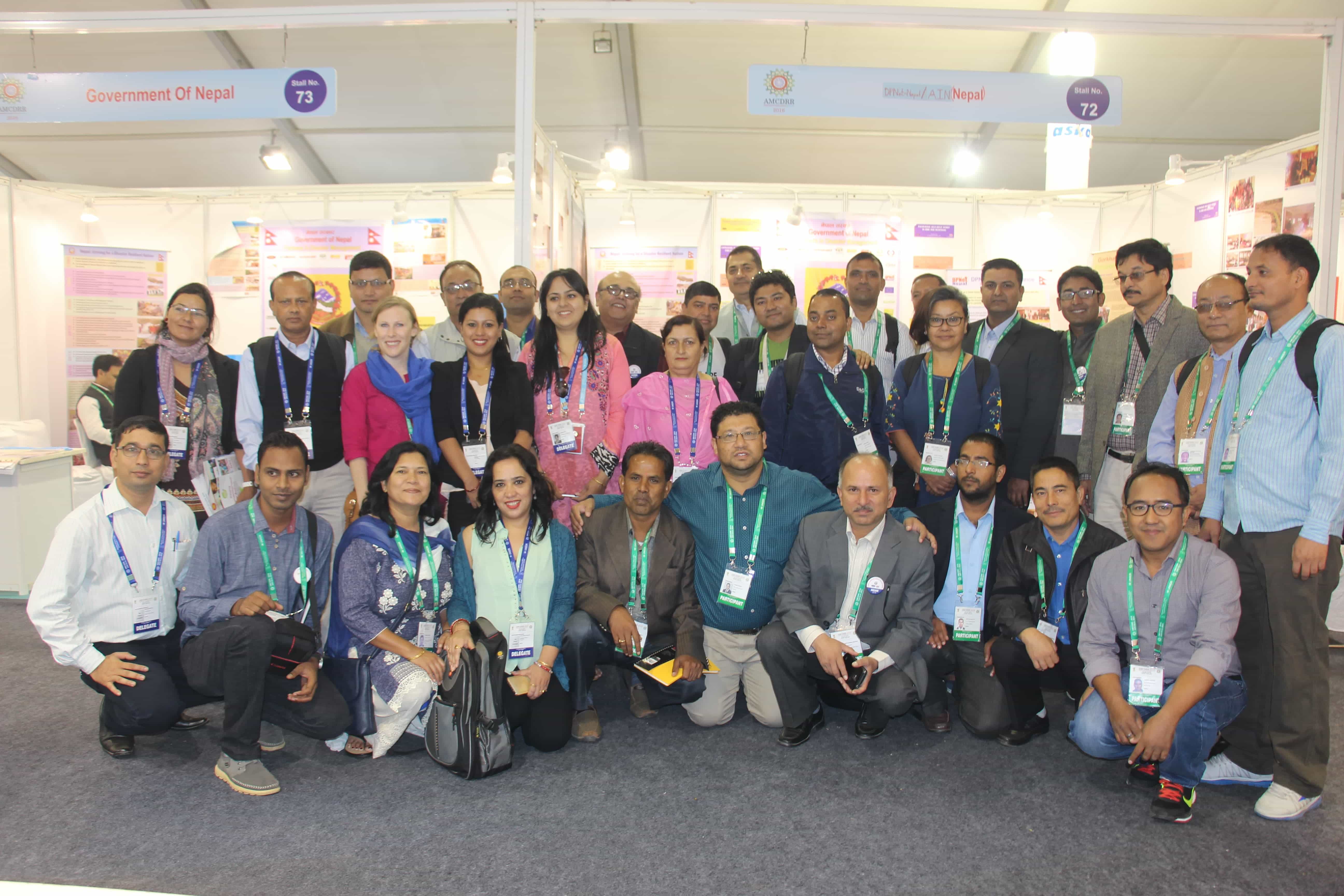Presentation and Discussion Program on Maina Bulbul Disaster Epic Explores Disaster Resilience and Literature

October 18, 2020- A presentation and discussion program centered around the Maina Bulbul disaster epic was coordinated by DPNet-Nepal and organized by the National Center for Disaster Management (NCDM) on October 18, 2020. The event, chaired by Mr. Surya Bahadur Thapa, Chairperson of DPNet-Nepal, featured esteemed guests including Prof. Dr. Jiba Raj Pokharel, former Vice-Chancellor of NAST, Prof. Dr. Kul Prasad Koirala, former Vice-Chancellor of Sanskrit University, Professor Keshab Subedi, and Mr. Mahesh Neupane, former Chairperson of the Engineering Literature Society. The program was joined by 37 participants in a virtual format.
The major highlight of the program was Prof. Dr. Jiba Raj Pokharel's presentation, in which he provided an overview of the Maina Bulbul Epic. The author's engaging presentation involved a unique combination of folk singing style, "Jhyaure vaaka," and guitar strumming, captivating the audience. The epic tells the story of three generations, focusing on a couple who faced various disasters as servants and cattle grazers. Their son becomes a disaster risk reduction and management (DRRM) expert, making villages and ultimately the entire country disaster-resilient.
The epic unfolds with the characters Maina and Bulbul, who endure personal losses during an earthquake. Over time, the community recovers, marriages take place, and life appears to return to normal. However, misfortunes strike when their shed catches fire, one of their buffaloes perishes in the flames, and Bulbul is swept away by a landslide. Maina, experiencing earthquakes, fire, and landslides, learns about the occurrence of disasters throughout history. She realizes the importance of preparedness and sends her son to study, who later becomes a DRR expert.
The son successfully makes their settlement disaster-resistant, but neighboring settlements remain vulnerable due to the chief's disbelief in the effectiveness of DRR measures. As a consequence, Ram's settlement remains unharmed while the chief's settlement suffers severe damage, including the chief's injury. Despite his loss as his mother visits the chief's settlement and passes away, Ram resolves to make the entire country disaster-resilient. He embarks on a national campaign, ultimately achieving his goal and ascending to heaven upon its completion.
Prof. Dr. Keshab Subedi, a retired Professor of Nepali Literature at Tribhuvan University, praised the epic's unique fusion of folk style with the author's expertise in geography, society, and disaster. He noted that the epic addresses the pain and challenges faced by Nepalese society in the wake of disasters, emphasizing the author's exceptional capacity and expertise in disaster literature and DRRM.
Prof. Dr. Kul Prasad Koirala drew parallels between Maina Bulbul and the adversity faced by the character Madan in the epic "Muna Madan." He commended the author's efforts in writing an architectural epic using classical meters and a semi-epic about the COVID-19 pandemic, both completed within a day. He underscored the importance of informing decision-makers about such literature and expressed hope that the epic's message of human-induced disasters and individual contributions to building disaster-resilient communities reaches a wider audience.
Mr. Mahesh Neupane, highlighting the author's role in establishing the Engineering Literature Society, expressed admiration for Maina Bulbul's ability to deliver a message of awareness regarding disasters. He emphasized the need for mental preparedness alongside physical preparedness to effectively prevent and mitigate disasters.
In the remarks section, Dr. Min Bahadur Paudyal Chhetri praised the author's multi-talented nature and contributions to DRRM through research and literature. He called for the promotion of such programs and requested DPNet and other organizations to provide platforms for similar initiatives.
Prof. Dr. Bishal Nath Upreti, who has known the author for fifty years, hailed the use of art and literature in sensitizing people to disaster issues. He proposed developing Maina Bulbul into a drama or movie and suggested collaborative efforts from DPNet, NDRRMA, and other organizations to bring the epic to life beyond the presentation podium. Prof. Dr. Upreti also emphasized the importance of writing and reflection through literature as a lasting legacy.
Mr. Surya Bahadur Thapa, in his closing remarks, highlighted the significance of responding promptly to disasters rather than lamenting the damage. He called for innovative and entertaining programs to effectively communicate disaster messages and urged CSOs to push for the implementation of legal documents related to disaster management. He thanked Prof. Dr. Jiba Raj Pokharel for his insightful contribution to DRRM through literature and expressed gratitude to all commentators and participants for their valuable insights.
The presentation and discussion program on the Maina Bulbul disaster epic provided a platform to explore the intersection of disaster resilience and literature. The epic's portrayal of personal and societal struggles, the importance of preparedness, and the transformative power of individual efforts to build disaster-resilient communities left a lasting impression on the participants.
